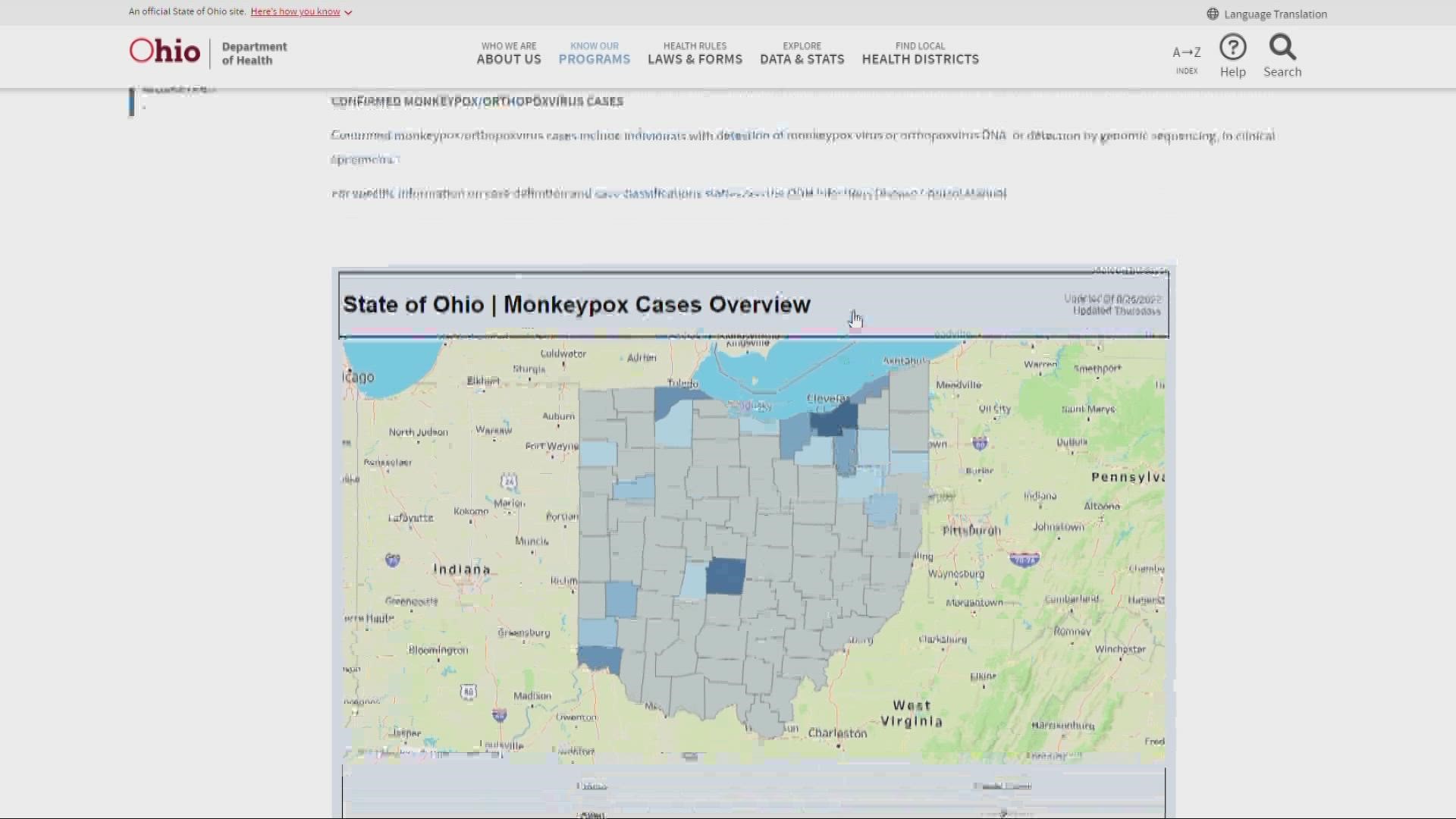CLEVELAND — With case numbers continuing to rise throughout the state, the Ohio Department of Health has announced that it has created a new monkeypox dashboard to provide the latest information.
The Monkeypox Cases Overview dashboard and interactive map shows the total number of cases across the state, the number of cases per county, the age range of people affected by monkeypox, the percentage of cases by sex, and outcomes, including any hospitalizations and deaths.
As of Thursday, there are 147 confirmed cases of monkeypox in Ohio. The most cases have been reported in Cuyahoga County with 69.
ODH says most cases (96%) have been among men.
The dashboard will be updated on Thursdays
“The Ohio Department of Health has been working closely with our local health department partners and healthcare providers to provide monkeypox testing, case investigation, contact tracing, and prevention and treatment options. As cases do continue to rise, we want to keep Ohioans informed about this outbreak, and what steps they should take to protect themselves,” Dr. Vanderhoff said. “The risk of contracting monkeypox for most Ohioans remains low, as this virus does not easily spread like COVID-19. However, it is important to continue to do all we can to mitigate the spread of this virus and to reduce the burden of illness.”
The Ohio Department of Health reported the state’s first case of monkeypox on June 13.
ODH says monkeypox is spread through close, personal, often skin-to-skin contact with someone who has monkeypox. Monkeypox can cause a rash that may look like pimples or blisters. The rash will change and turn to scabs before healing.
Some people may get flu-like symptoms like fever, headache, muscle aches, sore throat, cough, swollen lymph nodes, chills, or exhaustion. Sometimes, people get a rash first, then get other symptoms. Other people only get a rash.
People who have been exposed to monkeypox or believe they may be at high risk for exposure should contact their healthcare provider or local health department for more information about vaccine or possible treatment options.
Previous Reporting:

